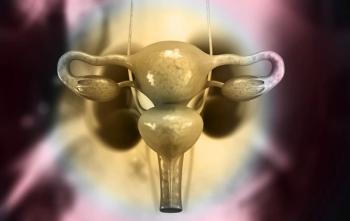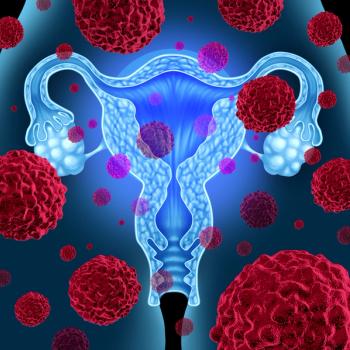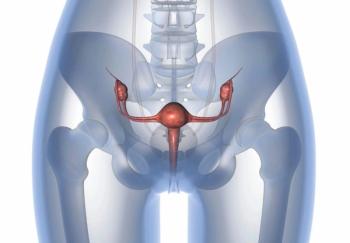
Oncology NEWS International
- Oncology NEWS International Vol 9 No 6
- Volume 9
- Issue 6
Most Ovarian Cancer Patients Have Prior Abdominal or GI Symptoms
SAN DIEGO-Most women with ovarian cancer have previous abdominal or gastrointestinal (GI) complaints, and diagnoses are often delayed because neither patients nor physicians recognize these early warning signs, Barbara A. Goff, MD, reported at the 31st Annual Meeting of the Society of Gynecologic Oncologists (SGO).
SAN DIEGOMost women with ovarian cancer have previous abdominal or gastrointestinal (GI) complaints, and diagnoses are often delayed because neither patients nor physicians recognize these early warning signs, Barbara A. Goff, MD, reported at the 31st Annual Meeting of the Society of Gynecologic Oncologists (SGO).
In the United States, 70% of women with ovarian cancer are currently diagnosed with stage III or IV disease, Dr. Goff, of the University of Washington School of Medicine, said in an interview with ONI. In nearly every case, the patients have previously experienced abdominal or GI complaints, pain, constitutional symptoms, urinary problems, or vaginal symptoms.
In our study, only 11% of women with stage I/II disease and 3% with stage III/IV disease reported no symptoms prior to their diagnosis, she said.
Data for this national study were drawn from a two-page survey distributed to 1,500 readers of an ovarian cancer newsletter. The surveys could be photocopied and given to other patients. A total of 1,725 surveys were returned from women in 46 states and four Canadian provinces, and 70% had stage III or IV disease.
Abdominal and GI symptoms were the most commonly reported complaints (see Table). These typically included feeling full after eating a small amount, bloating, constipation, and/or abdominal pain, Dr. Goff told ONI.
Women who ignored their symptoms were significantly more likely to be diagnosed with advanced disease, compared with those who did not, she said. The time required for a health care provider to make the diagnosis was reported as less than 3 months in 55% of cases, but greater than 6 months in 26% and greater than a year in 11%, Dr. Goff said.
Delay in diagnosis was significantly associated with omission of a pelvic exam at first visit; having a multitude of symptoms; being diagnosed initially with no problem, depression, stress, irritable bowel, or gastritis; not initially receiving an ultrasound, CT, or CA-125 test; and younger age.
I was surprised by the large percentage of patients who had delays in diagnosis of 3 or more months. Dr. Goff said. Delay in diagnosis did not correlate with the type of physician seen initially, type of insurance coverage, or specific symptoms experienced.
Based on these data, Dr. Goff recommends careful pelvic examination of any woman who presents with pelvic or abdominal complaints. She recommends ultrasound or CT examination for any women with persistent pelvic or abdominal complaints, and CA-125 assay if the ultrasound or CT scan shows an ovarian mass.
Women with ovarian cancer do have symptoms, and both women and physicians need to be aware of what these are. In addition, delay in diagnosis is common, and we need to identify ways to improve this, she said.
Articles in this issue
over 25 years ago
Genentech Issues Warning on Herceptinover 25 years ago
How Physicians Can Effect Changes in Health Care Policyover 25 years ago
Four From Congress Receive Tsongas Awardover 25 years ago
NCI Targets Cancer Disparities With Community-Based Programsover 25 years ago
Mapping Predicts Nodal Status in Colorectal Cancer Patientsover 25 years ago
SSO President Tells Members: ‘Remember Your Core Values’over 25 years ago
HHS Grants $794 Million in Ryan White Funds to Improve HIV Servicesover 25 years ago
Rapid Dose Titration With Controlled-Release Oxycodoneover 25 years ago
Standard-Dose Chemo May Have Long-Term Cognitive EffectsNewsletter
Stay up to date on recent advances in the multidisciplinary approach to cancer.

















































































